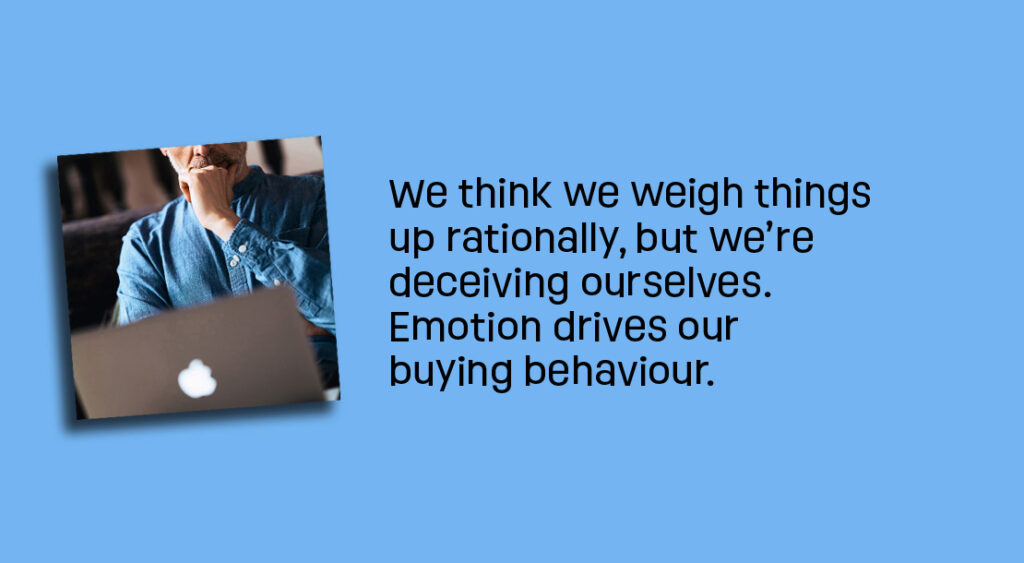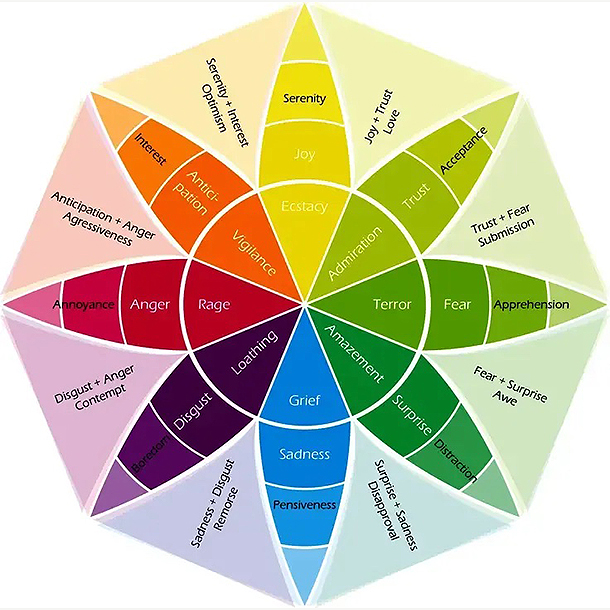Emotion is at the heart of decision-making. It makes sense, then, to use emotion in copywriting to influence the decisions you want your audience to make.
What drives 95% of purchasing decisions? The subconscious. We think we weigh things up rationally, but we’re deceiving ourselves. Emotion drives our buying behaviour.
Remember that thing you just had to have or something everyone else seemed to own except you?
Frequently, it’s when we succumb to our feelings that we’re most ready to buy. This is why marketers will tell you to focus on the benefits of a product or service rather than its features.
But upstream from the point of purchase, emotion still plays a critical role. Brands that engage their audience’s emotions are brands that command customer loyalty.
This emotional appeal works for B2B brands just as it does for B2C.
So, how should you use emotion in copywriting to create compelling brand content?

Emotive copy arouses strong feelings in your reader. These strong feelings are motivators.
We’re not talking about bland neutrality here. To have an impact, the copy must appeal directly to the reader’s emotions.
They will have fears, frustrations, desires, wants and needs. By tapping into these feelings, you can persuade or compel them to act.
Tapping into these feelings requires empathy – you must put yourself in their shoes and immerse yourself in their world.
And the emotive copy you write?
Individuals will have their own emotional reactions in any given situation, but it’s helpful to categorise, broadly, the kinds of feelings these might be.
Psychologist and academic Robert Plutchik proposed a theory of basic emotions. He constructed a wheel diagram to visualise the eight basic emotions:
Within these basic categories, the degree of emotion can vary, from mild to intense.
Plutchik’s wheel also shows the relationship between different emotions and groups the eight into four pairs.
Each emotion is a behaviour trigger.

Words and phrases can motivate people to act. Typically, these trigger words are concise but contain emotional depth.
For example, across the emotional spectrum of fear, you could apply the following words:
Or, to evoke anticipation, you could use these words:
Emotions influence people’s behaviour. From a strategic perspective, you’ve got to work out which emotions will work best with your target audience:
Whether you appeal to negative or positive emotions will depend on which you think will have the most powerful impact on your audience.
Ultimately, it’s not enough for them to feel something. You want them to act. This is the vital point of applying emotion in marketing.
It has to be appropriate to both the audience and the brand.
Emotive copywriting isn’t only for marketing campaigns. It influences how people perceive brands.
Brands are looking to build strong, enduring connections with their audiences. Emotive content helps them do this.
And just as brands have personalities, so they can have core emotions to which they appeal.
These can range from building trust and familiarity through sentimentality and nostalgia – think of food and drink brands like McVities and PG Tips – to bold, hedonic brands trading on feelings of self-expression and conspicuous consumption, such as luxury fashion labels.
To appeal to your audience’s emotions, you need to be sure you’re aligning your brand’s personality and tone of voice with your audience’s expectations.
Once you know and understand your audience, you can elicit emotional reactions from them.
This goes further than tapping into their existing emotions. Rather, you’re eliciting emotions you want them to feel.
You’re using emotion to convince your prospects and customers that your product or service will make them feel different. Basically, selling them an ideal version of themselves.
Again, this reinforces the features-not-benefits marketing mantra.
Is emotion appropriate in business content? When you’re marketing and selling to businesses, you’re still communicating with individuals.
Business owners, founders and CEOs have similar feelings to consumers, they’re subject to the same emotions.
Many B2B brands make the elementary mistake of confining their appeal to dry, rational arguments.
But people don’t make decisions purely on rational grounds. Imagine the founder who’s built up their enterprise from nothing and sacrificed time, money and energy to achieve this.
They’re going to be emotionally invested in their business. They care deeply about what happens next.
Savvy B2b brands recognise this emotional investment and speak a marketing language that sparks emotional responses.
Yes, this should be obvious, but at a time when AI is making serious inroads into content creation, it’s worth reiterating.
Good, effective copywriting makes a human connection. It uses empathy and emotion to create resonant messages.
It relates to audiences on a human level, communicating with them individually. Copy expertly written by humans for humans will do this.
Book an introductory chat with me to find out how to inject emotion into your content to grow your brand and business.